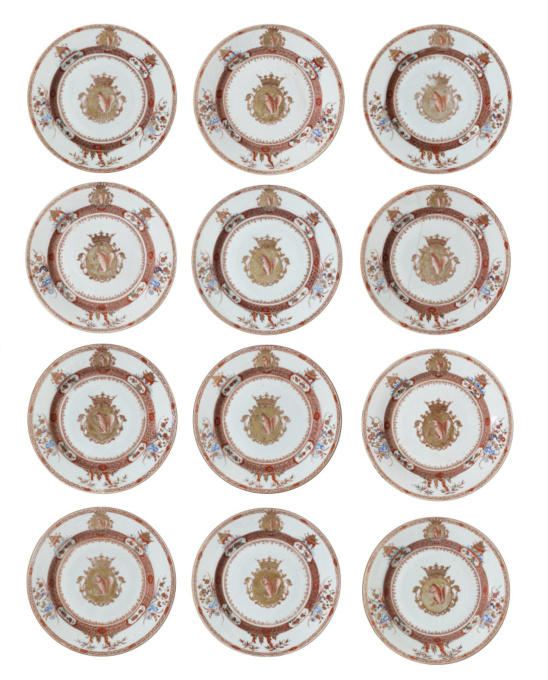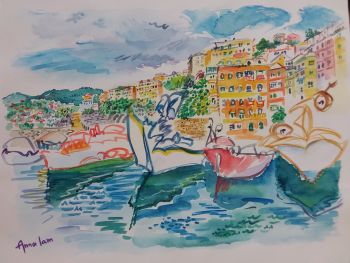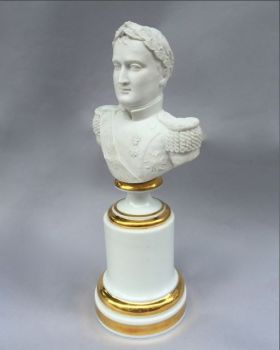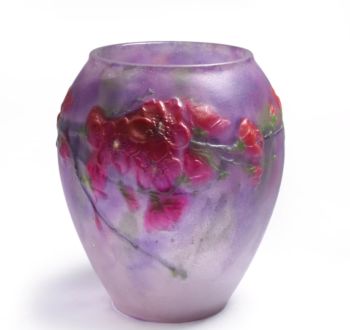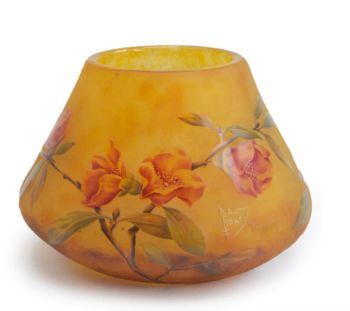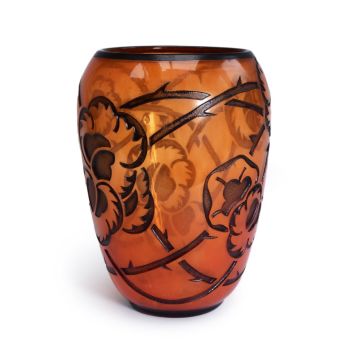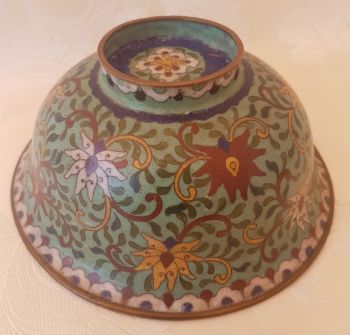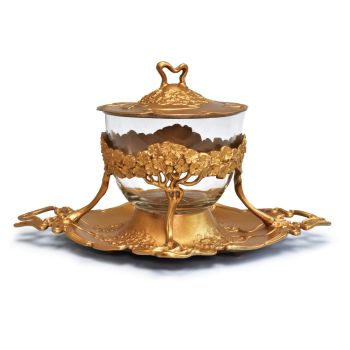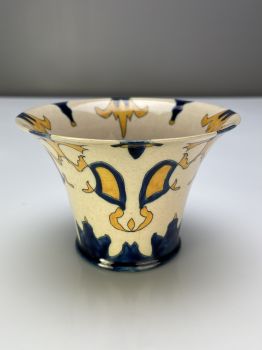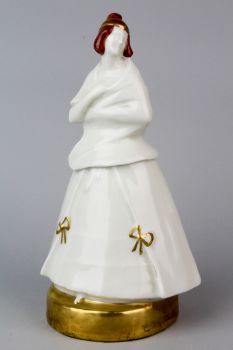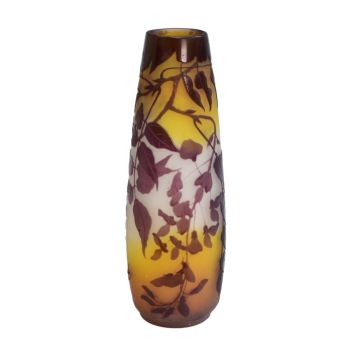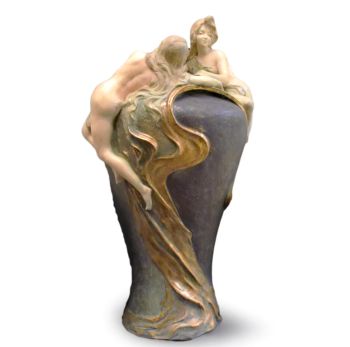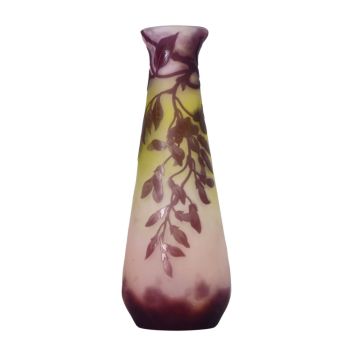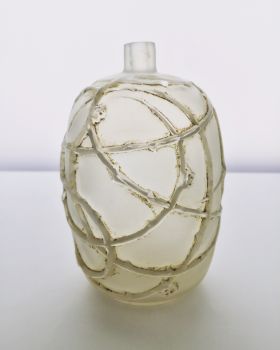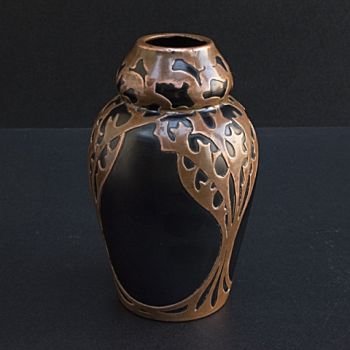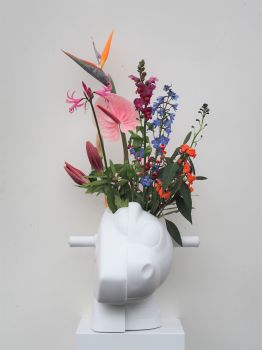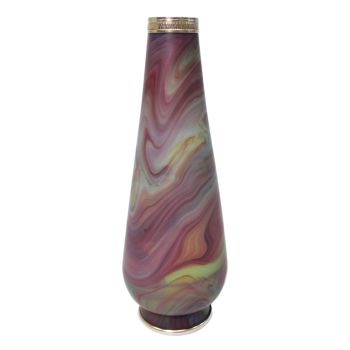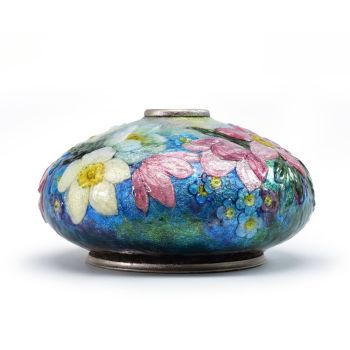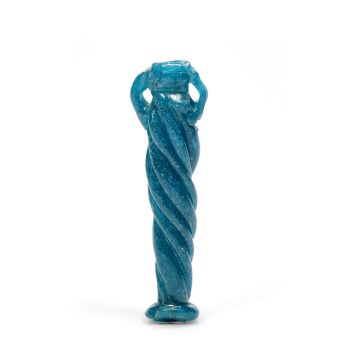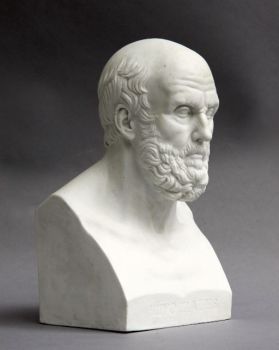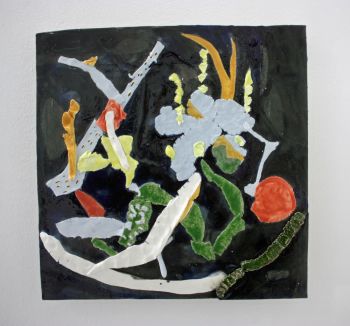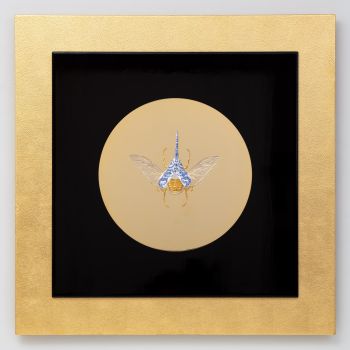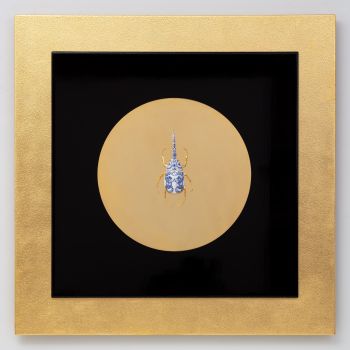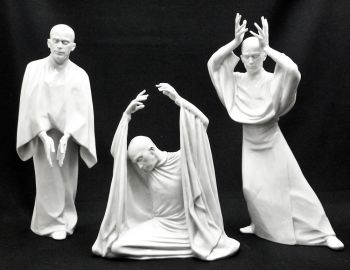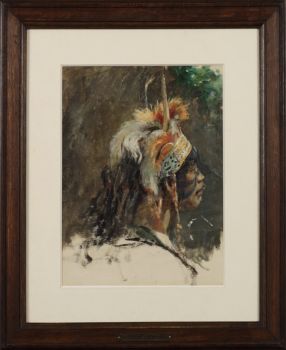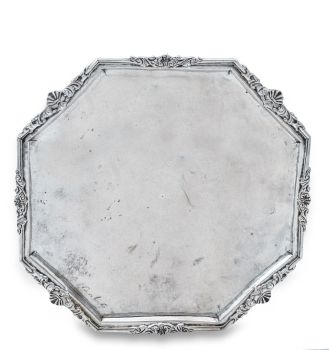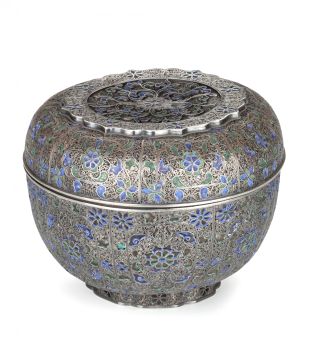A rare set of twelve Chinese export porcelain plates bearing the arms of Jan Albert Sichterman (1692 1730 - 1764
Unknown artist
Porcelain
ø 23 cm
Price on request
Zebregs & Röell - Fine Art - Antiques
- About the artworkA rare set of twelve Chinese export porcelain plates bearing the arms of Jan Albert Sichterman (1692-1764)
Qianlong period, circa 1730-1735
Each decorated in iron red, gold, brown, green, purple and blue, with in the center and upper rim, the Sichterman coat-of-arms of a red squirrel on a gold ground, nibbling at a green leaf, on an oval shield with a coronet on top.
Diam. 23 cm (each)
Jan Albert Sichterman (Groningen 1692 - 1764) commissioned this, and seven other dinner services, coffee and tea services and numerous other pieces of Chinese porcelain with his coat-of-arms. At 24, after a duel in which he wounded his opponent, Jan Albert had to flee the Netherlands. In 1716 he arrived in Batavia (Jakarta), and a year later, he was sent to Hooghly, the Dutch factory in Bengal. Here he made a splendid career, perhaps because in 1721 he married Sibylla Volkera Sadelijn (1699-1781), daughter of Jacob Sadelijn, Director of Bengal from 1727 till 1734. Jan Albert succeeded his father-in-law as Director of Bengal in 1734 till 1744, when he returned to Holland as commander and admiral of the return fleet, taking a large part of his armorial porcelain collection with him. Many pieces had already been sent to the Netherlands in advance.
In Bengal, Jan Albert was active in the cotton and silk trade for the VOC and also in very lucrative private trade and smuggling, which made him a fortune. After his death in 1764, his huge collection of porcelain, Japanese lacquer, exotica, oriental furniture, and numismatics, books, and 481 Dutch master paintings, including Rembrandt, Frans Hals, Jan Steen, Rubens and many other masters. The sale included about 750 lots of porcelain, in total over 4000 pieces, while he had given his three surviving children already a fair share of his porcelain collection. It is no wonder that Sichterman, who could design his own coat-of-arms as a nouveau riche, chose the ever-acorn-collecting squirrel to adorn his shield. - About the artist
It might happen that an artist or maker is unknown.
Some works are not to be determined by whom it is made or it is made by (a group of) craftsmen. Examples are statues from the Ancient Time, furniture, mirroirs, or signatures that are not clear or readible but as well some works are not signed at all.
As well you can find the following description:
•“Attributed to ….” In their opinion probably a work by the artist, at least in part
•“Studio of ….” or “Workshop of” In their opinion a work executed in the studio or workshop of the artist, possibly under his supervision
•“Circle of ….” In their opinion a work of the period of the artist showing his influence, closely associated with the artist but not necessarily his pupil
•“Style of ….” or “Follower of ….” In their opinion a work executed in the artist’s style but not necessarily by a pupil; may be contemporary or nearly contemporary
•“Manner of ….” In their opinion a work in the style of the artist but of a later date
•“After ….” In their opinion a copy (of any date) of a work of the artist
•“Signed…”, “Dated….” or “Inscribed” In their opinion the work has been signed/dated/inscribed by the artist. The addition of a question mark indicates an element of doubt
•"With signature ….”, “With date ….”, “With inscription….” or “Bears signature/date/inscription” in their opinion the signature/ date/ inscription has been added by someone other than the artist
Are you interested in buying this artwork?
Artwork details
Related artworks
- 1 - 4 / 12
Unknown artist
Series of 6 Chinese cups and saucers (Yongzheng period)1722 - 1735
Price on requestKuipers Kunst & Antiek
1 - 4 / 11Unknown artist
Cristallo façon de Venise Drinking Glass1600 - 1650
Price on requestPeter Korf de Gidts - Antiquairs
1 - 4 / 24Unknown artist
A large Japanese Imari porcelain 'VOC Groningen' dish1800 - 1925
Price on requestZebregs & Röell - Fine Art - Antiques
Samuel Dejong
Anatomia Blue Heritage, Hercules Open2017 - 2019
Price on requestVilla del Arte Galleries
 Curated by
Curated byGallerease Magazine
Samuel Dejong
Anatomia Blue Heritage, Atlas Closed2017 - 2019
Price on requestVilla del Arte Galleries
1 - 4 / 24Unknown artist
A COLLECTION OF FOUR SRI LANKAN IVORY BIBLE BOXES18th century
Price on requestZebregs & Röell - Fine Art - Antiques
Unknown artist
A RARE COMPLETE INDIAN SADELI INLAID WORK AND WRITING BOX1800 - 1850
Price on requestZebregs & Röell - Fine Art - Antiques
Unknown artist
AN UNUSUAL INDONESIAN LOBBED SILVER DISHlate 17th
Price on requestZebregs & Röell - Fine Art - Antiques
Unknown artist
A JAPANESE MODEL OF A NORIMONO, A PALANQUIN1650 - 1700
Price on requestZebregs & Röell - Fine Art - Antiques
1 - 4 / 12

